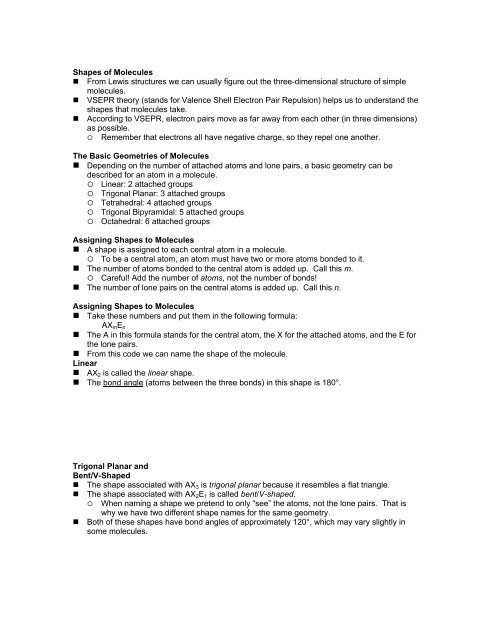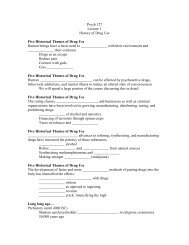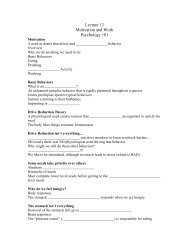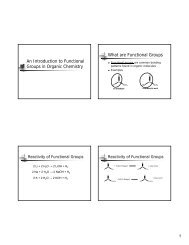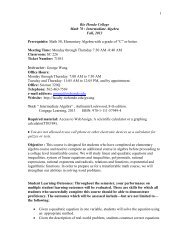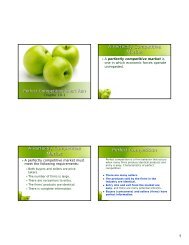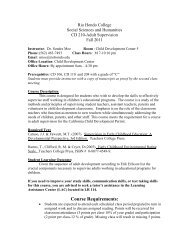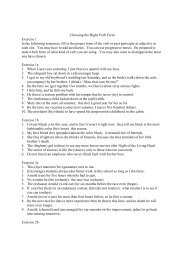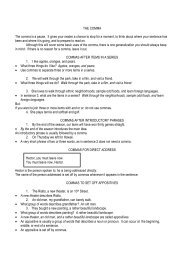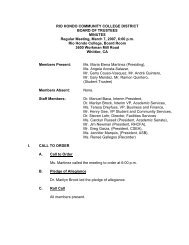Create successful ePaper yourself
Turn your PDF publications into a flip-book with our unique Google optimized e-Paper software.
Shapes of Molecules<br />
• From Lewis structures we can usually figure out the three-dimensional structure of simple<br />
molecules.<br />
• VSEPR theory (stands for Valence Shell Electron Pair Repulsion) helps us to understand the<br />
shapes that molecules take.<br />
• According to VSEPR, electron pairs move as far away from each other (in three dimensions)<br />
as possible.<br />
◦ Remember that electrons all have negative charge, so they repel one another.<br />
The Basic Geometries of Molecules<br />
• Depending on the number of attached atoms and lone pairs, a basic geometry can be<br />
described for an atom in a molecule.<br />
◦ Linear: 2 attached groups<br />
◦ Trigonal Planar: 3 attached groups<br />
◦ Tetrahedral: 4 attached groups<br />
◦ Trigonal Bipyramidal: 5 attached groups<br />
◦ Octahedral: 6 attached groups<br />
Assigning Shapes to Molecules<br />
• A shape is assigned to each central atom in a molecule.<br />
◦ To be a central atom, an atom must have two or more atoms bonded to it.<br />
• The number of atoms bonded to the central atom is added up. Call this m.<br />
◦ Careful! Add the number of atoms, not the number of bonds!<br />
• The number of lone pairs on the central atoms is added up. Call this n.<br />
Assigning Shapes to Molecules<br />
• Take these numbers and put them in the following formula:<br />
AX m E n<br />
• The A in this formula stands for the central atom, the X for the attached atoms, and the E for<br />
the lone pairs.<br />
• From this code we can name the shape of the molecule.<br />
Linear<br />
• AX 2 is called the linear shape.<br />
• The bond angle (atoms between the three bonds) in this shape is 180°.<br />
Trigonal Planar and<br />
Bent/V-Shaped<br />
• The shape associated with AX 3 is trigonal planar because it resembles a flat triangle.<br />
• The shape associated with AX 2 E 1 is called bent/V-shaped.<br />
◦ When naming a shape we pretend to only “see” the atoms, not the lone pairs. That is<br />
why we have two different shape names for the same geometry.<br />
• Both of these shapes have bond angles of approximately <strong>120</strong>°, which may vary slightly in<br />
some molecules.


